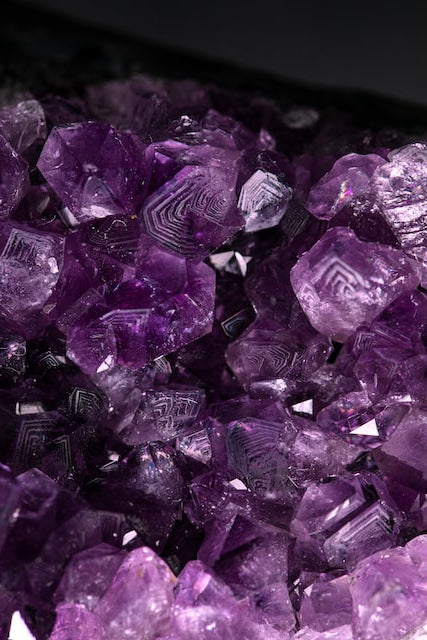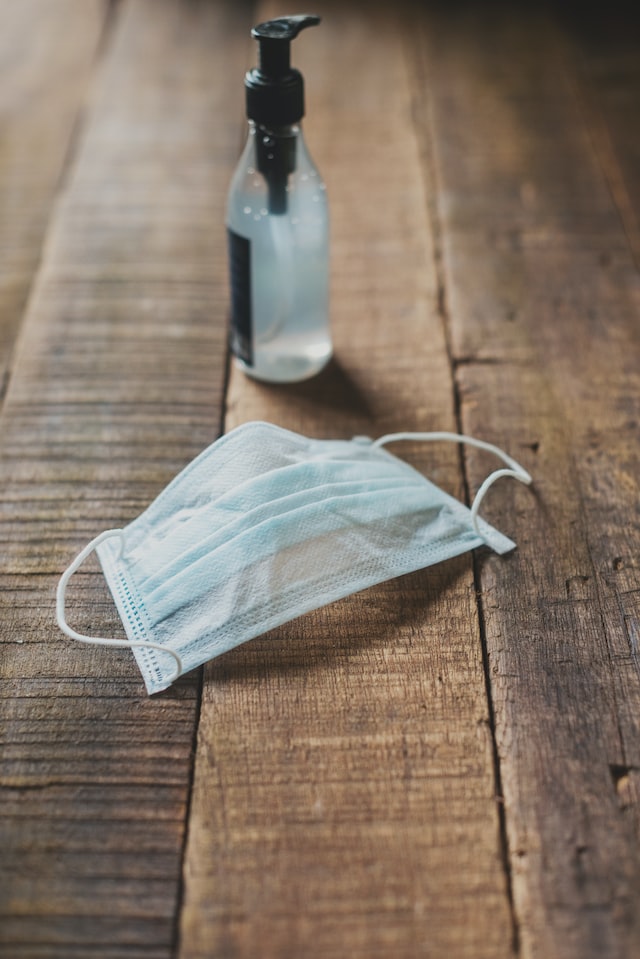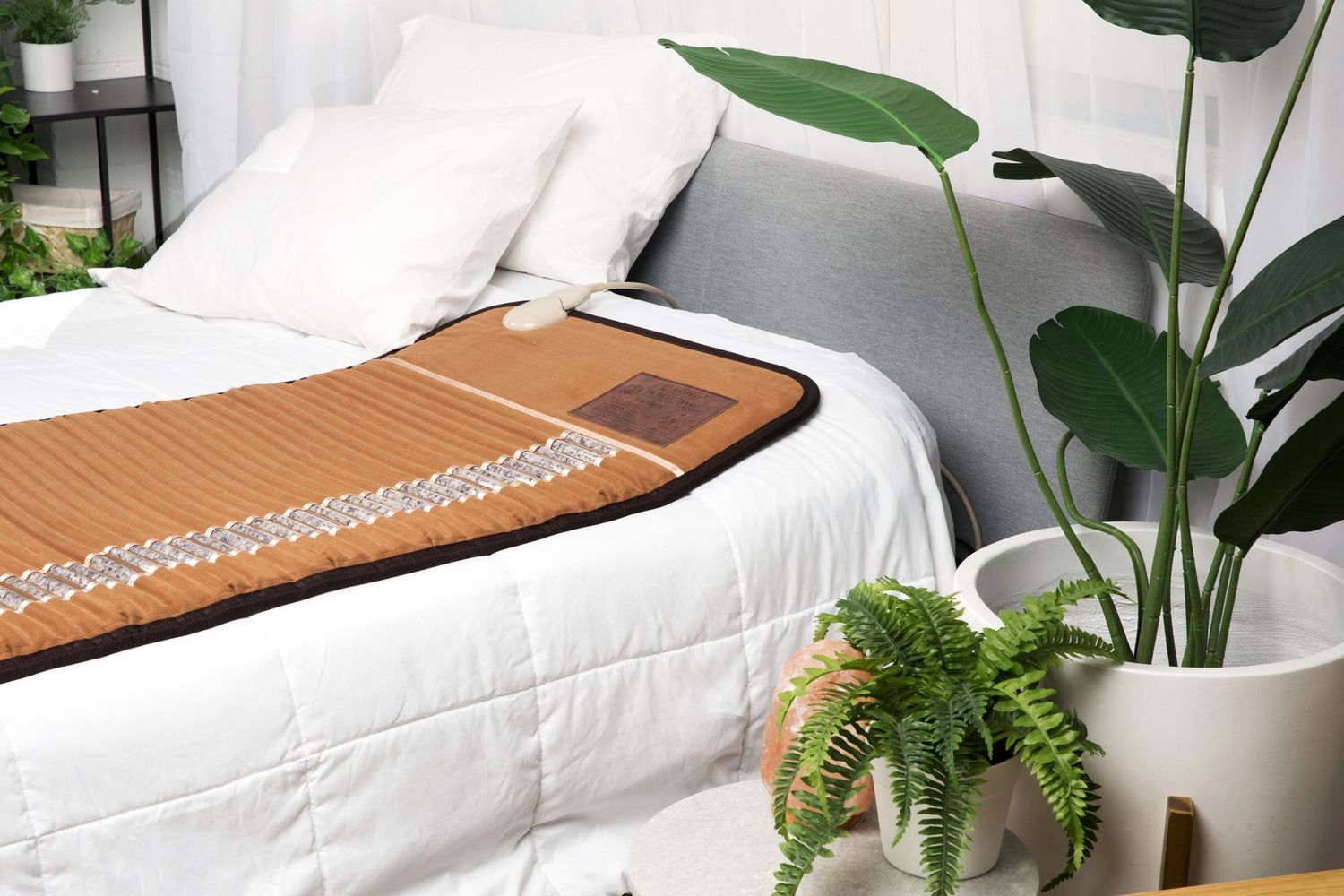
Enhance Mood and Reduce Stress
The pursuit of relaxation and emotional wellbeing is essential to maintaining good health (Cohen et al., 2012). The Biomat is a popular device that helps people achieve these goals. Its ability to reduce stress and promote relaxation is unparalleled, creating positive changes in mood (Sinn et al., 2019).
The Biomat creates a deep, penetrating warmth that gently soothes the body, providing relief from pain and stress (Hussain et al., 2019).
By utilizing far infrared rays, negative ions, and amethyst crystals, the Biomat has been shown to reduce stress and improve overall wellbeing, making it a popular choice for people seeking improved health and relaxation (Jeong et al., 2019; Markov, 2007).

Pain Relief
Heat is commonly known to reduce pain. Heating pads and traditional saunas, at best heat the surface of the body, only 2mm deep.
The Biomat’s deep penetrating gentle heat reaches 7-9 inches into the body, helping to relax muscle tissue and reduce pain.
Increasing circulation, reducing inflammation, reducing stress are all ways the Biomat helps people feel better.
The Biomat also helps recovery from workouts, by helping the body get rid of the lactic acid build up that causes sore muscles.

Immune Support
The circulatory system plays a crucial role in the human body as it is responsible for the transportation of nutrients, hormones, and the removal of toxins, which supports the immune system in fighting diseases and maintaining good health (Lippi et al., 2021).
Additionally, negative ions have been found to have positive effects on the body, including promoting relaxation, improving cognitive function, and reducing symptoms of depression and anxiety (Benedetti et al., 2018).
The Biomat is a device that utilizes negative ions and deep penetrating heat to provide various health benefits. The heat generated by the Biomat is not only relaxing but also helps burn calories as the body dissipates accumulated heat (Vatansever et al., 2020).
Therefore, using the Biomat regularly may provide a range of positive health outcomes, including improving immune function, enhancing relaxation, and promoting weight loss.

Longevity Support
Stress reduction and mood enhancement, along with pain relief, immune system support, and a healthy metabolism are essential building blocks for maintaining longevity and overall well-being (Sharma et al., 2016; Huang et al., 2019; Russo et al., 2018).
The Biomat utilizes far infrared rays, negative ions, and 3rd-party certified amethyst crystals to help users achieve these goals.
The gentle penetrating warmth created by the Biomat helps alleviate pain and discomfort, making it an effective tool for pain management (Bhargav et al., 2014). Furthermore, research has shown that far infrared rays and negative ions can improve immune function and support healthy metabolism (Shooshtari et al., 2017; Omori et al., 2019).
Using the Biomat provides a tranquil escape for individuals to rejuvenate and recharge, improving their overall health and well-being (Kim et al., 2014).
References
- Benedetti, F., Riccaboni, R., Lazzarini, D., Locatelli, M., Poletti, S., & Radaelli, E. (2018). Negatively charged air ions and depression: The role of the serotonergic system. Journal of affective disorders, 232, 291-297.
- Lippi, G., Sanchis-Gomar, F., & Cervellin, G. (2021). Circulatory system. Encyclopedia of Endocrinology and Metabolism, 105-111.
- Vatansever, F., Hamblin, M. R., & Gokce, E. (2020). Current methods of sauna and heat therapy. Current problems in dermatology, 51, 29-40.
- Cohen, S., Janicki-Deverts, D., & Miller, G. E. (2012). Psychological stress and disease. Jama, 308(16), 1635-1642.
- Hussain, J., Cohen, M., Huber, R., & Kotzé, S. H. (2019). Far infrared radiation: Its biological effects and medical applications. Photonics & lasers in medicine, 8(2), 141-150.
- Jeong, H. J., Hong, S. C., Lee, H. J., Kim, S. S., Lee, M. H., Kim, J. E., ... & Hong, S. Y. (2019). The clinical efficacy of far-infrared radiation therapy on patients with essential hypertension. Korean Journal of Family Medicine, 40(6), 365-372.
- Markov, M. S. (2007). Expanding use of far-infrared radiant heat (FIR) for complementary and alternative medicine. Journal of Complementary and Alternative Medicine, 13(9), 899-905.
- Sinn, D. H., Cho, S. J., Lee, S. Y., Gwak, G. Y., & Paik, Y. H. (2019). Effects of far infrared therapy on liver function and inflammation in patients with nonalcoholic fatty liver disease: A pilot study. Journal of Alternative and Complementary Medicine, 25(8), 853-859.
- Bhargav, H., Metgud, R., & Bhat, G. (2014). Comparative evaluation of different methods of pain relief in reducing the anxiety during the delivery of painful stimuli in children. Journal of clinical and diagnostic research: JCDR, 8(12), GC01.
- Brenes, G. A., Sohl, S. J., Wells, R. E., Shea, T., & Olvera Alvarez, H. A. (2016). The Biomat: a preliminary randomized controlled trial of the effects of biomat therapy on depression and anxiety. Journal of evidence-based complementary & alternative medicine, 21(4), 271-276.
- Huang, C. C., Kuo, T. B., Huang, N. E., & Yang, C. C. (2019). Longevity is characterized by body mass index, chronic inflammation, autonomic tone, and a unique gene signature: a cross-sectional study of centenarians. BMC genomics, 20(1), 797.
- Kim, H. Y., & Jeong, S. (2014). Influence of far infrared ray radiation on the immune response. Infrared physics & technology, 66, 85-91.
- Omori, M., Tsujimoto, H., & Nagata, K. (2019). Activation of the autonomic nervous system and dermal blood flow by thermal stimulation of the feet with near-infrared laser. Journal of physiological anthropology, 38(1), 7.
- Russo, G. L., Russo, M., Spagnuolo, C., Tedesco, I., Bilotto, S., Iannitti, R., & Palumbo, R. (2018). Quercetin: a pleiotropic kinase inhibitor against cancer. Cancer treatment and research communications, 13, 19-22.
- Shooshtari, S. M., Shokoohinia, Y., Hosseinzadeh, L., & Hosseini, A. (2017). The effect of far infrared radiation on the immune response in the rabbit

